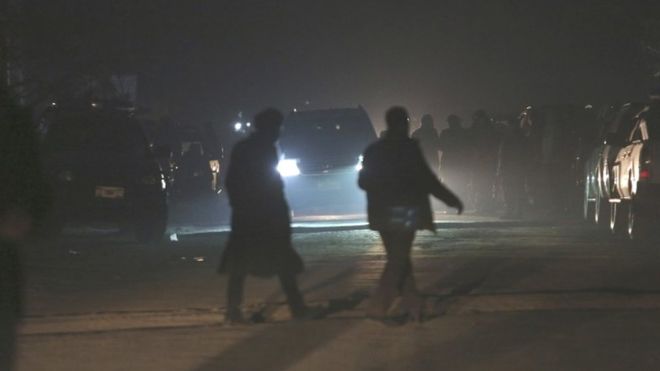Sharp Deterioration Of Security In Kabul, Taliban Claim Yet Another Attack

NEW DELHI: The year 2016 has seen a sharp decline in the security situation of the Afghan capital Kabul, with the last few weeks of the year seeing another attack. Taliban militants have claimed responsibility for an attack on the house of a member of parliament in Kabul, killing at least five people.
The attack took place in the compound of the Helmand MP, Mir Wali. The MP is believed to have survived, although two of his grandchildren and three others have been killed in the attack.
At the time of writing, a hostage situation is supposedly ongoing. Details are yet to emergy. The Taliban in a statement said suicide bombers attacked the house because it was hosting an "important gathering of security officials".
The attack exposes the deteriorating security situation in Afghanistan, as the year 2016 has been one of the worst years yet in terms of civilian casualties. Additionally, the Taliban has seen some of its biggest gains this year -- especially in the provinces of Helmand and Kunduz. Reports from the ground state that Lashkar Gah is in lockdown with only a few shops open and many families trying to flee the fighting. Schools and universities across the province have been closed indefinitely. Reports from Kunduz tell the same story, with news routinely breaking that the Taliban have pushed into Kunduz city before being repelled by Afghan forces.
Afghan and NATO forces repeatedly insist that neither Lashkar Gah or Kunduz are at risk of falling to the Taliban, but reports from the ground differ as the Taliban closes in on both cities and controls large swathes of the surrounding territory.
The result of the push in fighting is a spike in civilian casualties, with UN Assistance Mission in Afghanistan (UNAMA) documenting 1,601 civilian deaths and 3,565 injured civilians between January and June this year, an increase of four per cent in the total number of casualties compared to the first six months of 2015.
The total civilian casualty figure recorded by the UN since 1 January 2009 through 30 June 2016 has risen to 63,934, including 22,941 deaths and 40,993 injured.
“The testimony of victims and their families brings into agonizing focus the tragedy of each one of the 63,934 people killed or maimed by this protracted conflict since 2009,” said UN High Commissioner for Human Rights Zeid Ra'ad Al Hussein in a press release.
This year's casualties include 1,509 children, 388 dead and 1,121 injured, a figure Zeid described as “alarming and shameful,” particularly as it represents the highest numbers of children killed or wounded in a six-month period since counting began in 2009.
There were also 507 women casualties, 130 killed and 377 injured.
The figures are conservative – almost certainly underestimated – given the strict methodology employed in their documentation and in determining the civilian status of those affected.
In the press release, Tadamichi Yamamoto, the Secretary-General's Special Representative for Afghanistan and head of UNAMA, stressed that the report must serve as a call to action by parties to the conflict “to do all they can to spare civilians from the horrors of war.”
“Every single casualty documented in this report – people killed while praying, working, studying, fetching water, recovering in hospitals – […] represents a failure of commitment and should be a call to action for parties to the conflict to take meaningful, concrete steps to reduce civilians' suffering and increase protection,” Yamamoto said.
The data from the second half of the year is yet to be released, but given the spike in violence and upward trend in casualties, 2016 is likely to be one of the bloodiest years yet for the Afghan people.



